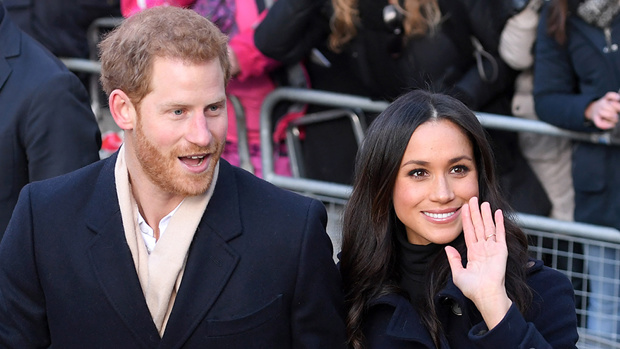Which royals does Meghan Markle have to curtsey to?
- Publish date
- Friday, 8 Dec 2017, 8:30AM

Photo / Getty
Who does Meghan have to curtsey to? The Daily Mail's
Christopher Wilson explains the etiquette minefield that means she will sometimes have to bend the knee to Camilla and Sophie but never to Zara. And yes, believe it or not this in 2017!
Years ago, when Prince Philip was a mere whippersnapper, he thought the whole business of curtseying at Court a bit of a laugh.
Invited to Balmoral by his future father-in-law, George VI, Philip discovered he was expected to wear a kilt, an item he did not possess. In a hastily-borrowed tartan man-skirt, he was ushered into His Majesty's presence — and promptly dropped a full curtsey. The King was not amused.
Seventy years on, the tradition of bobbing before the Sovereign continues — even if these days it's only the womenfolk who are required to do it.
Men have the easy option at Court, they just bow to everybody they meet.
But for women, the whole dip-and-bob business is a social minefield: To whom do they curtsey and from whom should they expect a curtsey? When should they do it? How often?
It's just one of the many perils of Royal etiquette that lie ahead for Prince Harry's fiancee, Meghan Markle.

Photo / Getty
Curtseying, within the confines of the royal court, is not only a physical act but a political one, too. The rules and the pecking order can change, and they bear little relation to the order of succession.
Meghan will be expected to become swiftly au fait with who's above, and who's beneath, her and Harry. For his part, as guide and mentor, Harry will need to take her painstakingly through the protocol.
So does she curtsey to her sister-in-law, the Duchess of Cambridge? Yes.
Does she, a complete newcomer to the royal pack, curtsey to Sophie, Countess of Wessex — a one-time commoner but a royal since 1999?
No, she doesn't. Except if Prince Edward, Sophie's husband, is in the room. In which case, she needs to flex those knees. As out-dated as it sounds, it's the presence of the royal husband that 'validates' the status of the wife.
A curtsey to Princess Anne? Yes. She's the daughter of the Sovereign. Princesses Eugenie and Beatrice? Yes. But not if Harry's in the room when they should curtsey to her.
What if the Queen's cousin, Princess Alexandra, wanders by? Now aged 80, she's considered more regal than the Queen, boasting two royals for parents (Prince George of Kent, fourth son of George V, and Princess Marina of Greece and Denmark) rather than just the one. She still curtseys to Her Majesty, and to Anne (Sovereign's daughter). But that's all: Meghan, and everybody else, must pay obeisance to her.
Then there's Alexandra's sister-in-law, Princess Michael of Kent, of whom legend has it the Queen, on being informed of her European royal credentials, remarked that "she sounds a bit too grand for us". Grand or not, Meghan will never have to bob before her.
Nor before Princess Anne's daughter Zara Phillips, who despite being a blood royal will still be below Meghan in the pecking order (and expected to curtsey to her if Harry is present).
As you can see, it's rather a complex business but one that is taken seriously by courtiers (if not always the royals themselves).
The current rules on who-curtseys-to-who come from a document drawn up by the Queen's private secretary in 2005 and circulated among the family and courtiers only.
Entitled "Precedence Of The Royal Family To Be Observed At Court", its purpose was to clarify Camilla's place in the firm following her marriage to Charles.
As the new wife of the Prince of Wales, Camilla ought to have come second in order of precedence after the Queen — the position Diana occupied as Princess of Wales.
However, owing to the circumstances and evolution of her relationship with Charles, Camilla was moved down a peg or two.
"This was done at the behest of Princess Anne and Princess Alexandra, both of whom had given their adult lives to royal service," a former courtier told me.
"They saw no reason to make obeisance to this — at the time — highly unpopular woman. Anne in particular made it clear she had no intention of curtseying to her ever."
Its effect was to put Princesses Anne, Alexandra, Beatrice and Eugenie ahead of Camilla — but not Sophie Wessex.
Her nose was said to have been put severely out of joint when told she would not have the same seniority as the others.
"She didn't like that one bit," the courtier said.
In 2012, the rules were updated to include the Duchess of Cambridge and her place in the order of precedence is behind the blood royal Anne, Alexandra, Beatrice and Eugenie (although when William is by her side she is not expected to curtsey to the last two).
Without William, Kate would curtsey to Camilla; with him, she would not. That's unless Prince Charles is present, in which case she would.
The curtsey or "courtesy" is one of the last great eccentricities of British royalty. It was instituted in the 1500s as an easier alternative to dropping down on one's knees — which is what people used to do when confronted with royalty.
Over time, men adopted a low bow, while women developed a more graceful and lasting movement that has remained a hallmark of royal politesse ever since.
That takes care of the women. Then there are the courtesies Meghan must extend to the men at court. Fortunately for her, it's a far simpler proposition.
If he's got Prince in front of his name, she will curtsey. For people such as Peter Phillips, of royal blood but without a title, she won't.
Once she's mastered all that etiquette, Meghan will have to perfect her curtsey. In Love In A Cold Climate, Nancy Mitford, great satiriser of the upper classes and their habits, provides a wonderful description of how daft it's possible to look doing it.
She says of the character Lady Montdore: "Her curtseys, owing to the solid quality of her frame, did not recall the graceful movement of wheat before the wind. She scrambled down like a camel, rising again backside foremost like a cow, a strange performance, painful it might be supposed to the performer, the expression on whose face, however, belied this thought. Her knees cracked like revolver shots but her smile was heavenly."
It's not something Meghan will seek to emulate: instead her right foot will slide behind and slightly to the left of her left leg as she gradually sinks down on the bent right leg, arms falling to the side and with the head slightly — but not abjectly — lowered.
She then must rise with her weight on the left foot, since it does not move during the sequence of the curtsey.
It's well worth practising before coming face-to-face with a royal as it can put your back out if done incorrectly and it's easy to topple over.
A few years ago, the Queen privately acknowledged the curtsey was anachronistic — indicating that she no longer expected women publicly introduced to her to perform it (and indeed, younger royal women are also more relaxed with each other).
And you can see why: When the statuesque figure of Theresa May entered the royal presence for the first time on taking up the office of Prime Minister in 2016, she made a curtsey and, though well-meant, it made both women look vaguely absurd.
However, within the confines of the royal court it remains. At formal dinners and get-togethers — and even on lesser occasions — it's still part of the highly-stylised royal life we rarely see or hear about.
There will be nights when the future Duchess of Sussex — the dukedom most likely to be bestowed on Harry and his bride — will sit with her husband scratching her head and trying to fathom why in 21st-century Britain such traditions are preserved.
At least she'll be spared the indignity accorded to thousands of debutantes throughout the 20th century at the Queen Charlotte Ball.
All were required to make a very public curtsey — not to a royal, but to a cake.
This article was first published on Daily Mail and is republished here with permission.

